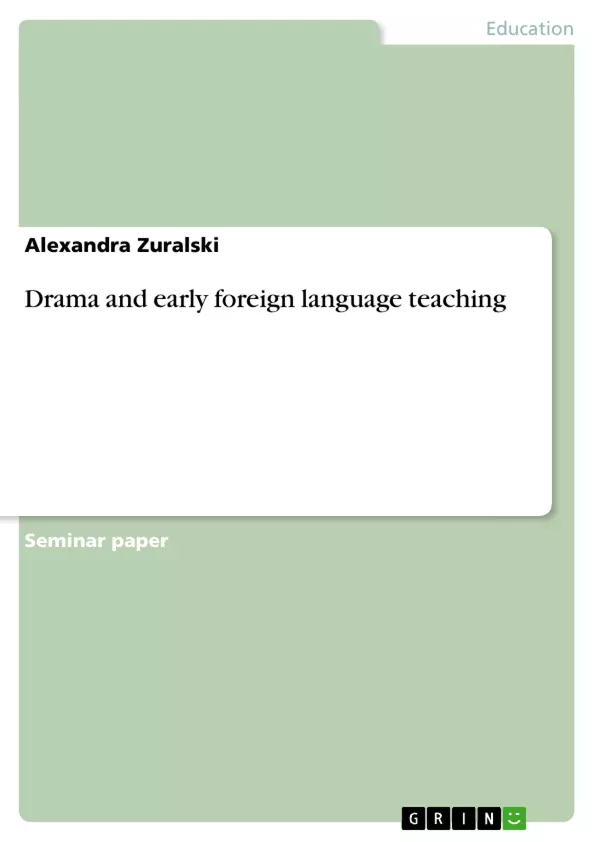In early foreign language teaching drama is a very useful method to promote language. According to my experience at primary schools, unfortunately drama activities are not that current in the language classroom. This is due to various reasons such as additional work for the teacher or insufficient practical experience in this area. I have to admit that even I myself had doubts about the efficiency of language learning with the help of drama activities. My fear was losing too much time with preparation, organisation and rehearsals, time that could be used more effectively otherwise in the language classroom. This explains my curiosity in how far the seminar Cross-curricular English through Drama and Multimedia would change my previous attitude or more precisely my slight objections towards drama activities.
In fact, I changed my mind through the work on the performance of our course during that term. More details concerning the new perspective I adopted can be found in the last part of this extended essay. Mainly, I want to point out how drama can help in learning English at primary school level. In this context, the four major features focus on language, focus on context, focus on learner as well as focus on content are of importance. But first of all, I want to look into the theoretical aspects of drama by trying to define the term drama and to differentiate between its different types.
Inhaltsverzeichnis (Table of Contents)
- Introduction
- Theory on drama
- Creative dramatics
- Recreational drama
- Children's theatre
- Young People's Theatre
- Theatre in Education (TIE)
- Early foreign language teaching
- Focus on language
Zielsetzung und Themenschwerpunkte (Objectives and Key Themes)
This extended essay examines the effectiveness of using drama activities to promote English language learning in primary school settings. It aims to challenge the common perception that drama takes up valuable time and explore its benefits in creating a positive and engaging learning environment.
- Defining and differentiating between different types of drama
- Exploring the application of drama activities in early foreign language teaching
- Highlighting the four key features of early foreign language teaching: focus on language, focus on context, focus on learner, and focus on content
- Analyzing how drama activities contribute to achieving these features
Zusammenfassung der Kapitel (Chapter Summaries)
- Introduction: The introduction outlines the author's initial reservations about drama in the language classroom and their subsequent shift in perspective after engaging with drama activities during a seminar. It highlights the importance of the four key features of early foreign language teaching, setting the stage for the theoretical exploration of drama in the following chapters.
- Theory on drama: This section delves into the definition of drama and explores various types of drama that are relevant to children's development. It differentiates between creative dramatics, recreational drama, children's theatre, young people's theatre, and theatre in education, providing a comprehensive overview of the different forms and their aims.
- Early foreign language teaching: This section focuses on the four major features of early foreign language teaching: focus on language, focus on context, focus on learner, and focus on content. It discusses the importance of language acquisition rather than learning in primary school and the role of recycling and memory anchors in developing language proficiency.
Schlüsselwörter (Keywords)
The essay focuses on drama activities in the language classroom, particularly in primary schools. Key themes include early foreign language teaching, language acquisition, creative dramatics, recreational drama, children's theatre, young people's theatre, theatre in education, focus on language, focus on context, focus on learner, and focus on content.
- Quote paper
- Alexandra Zuralski (Author), 2003, Drama and early foreign language teaching, Munich, GRIN Verlag, https://www.grin.com/document/93427



